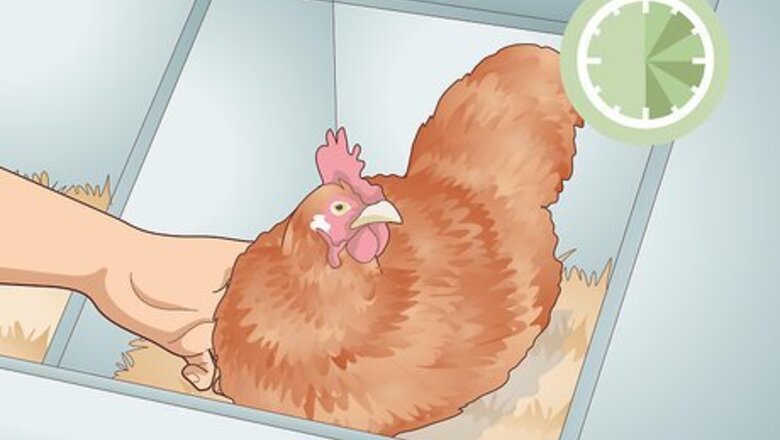
views
Identifying a Broody Hen
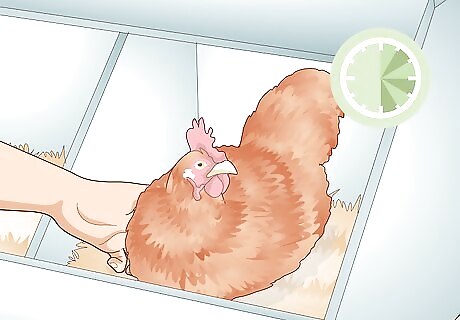
Check the nesting boxes every hour. Chickens only lay one egg a day. If there continues to be a hen in a nesting box she may be broody or sick. If you suspect she is ill, examine her and take her to a vet.
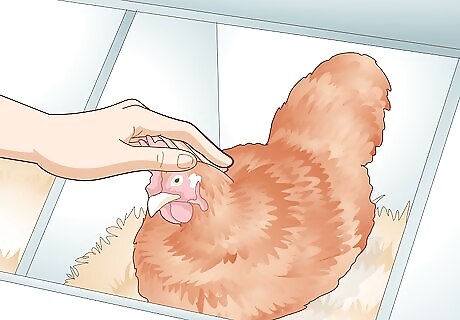
Pat your hen. When broody, most hens turn vicious and protective in nature. She might make some angry clucking noises or peck you. However, some hens only do this when their eggs have hatched. It's called motherly instincts. Attempt to take her eggs, there is a high chance she will peck you, indicating a broody nature.
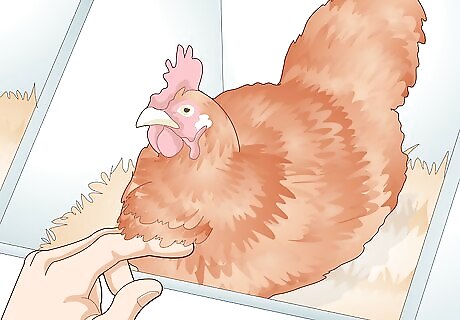
Examine your hen. In the nesting box, if her breast feathers are puffed out it's a sign that she is preparing for chicks by creating a warmer environment. In this case, you have a broody hen.
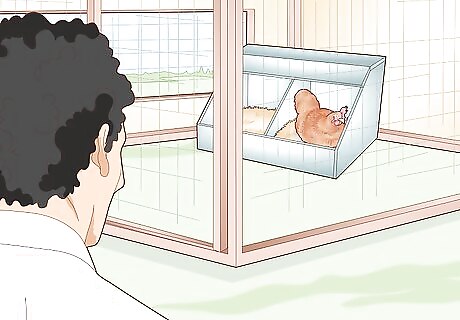
Watch your hen's behavior. An aggressive nature and puffed feathers aren't the only signs of broodiness. If you rarely see her come outside, apart from eating and drinking, it's an indication that she is broody.
Removing Your Hen
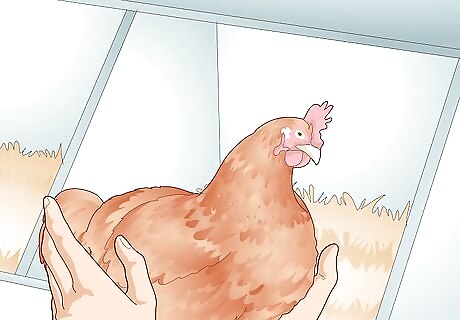
Remove the hen from the nesting box. Firmly grab her and place her outside the coop with the rest of the flock. Do not disturb her unless she goes back inside the coop.
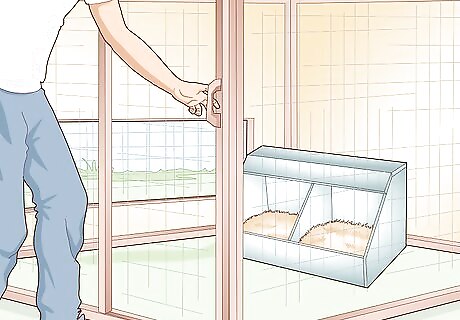
Close off the coop. If your hen continues to go back inside the coop, block the area off and force her into the run. Alternatively you can free-range your chickens, which may take her mind off the broody nature and encourage her to explore instead.
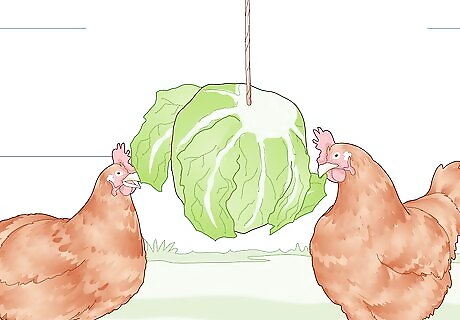
Distract your hen. Make special toys for your flock, or introduce new treats. Chickens like to peck at hanging cabbage. They also love scratch as a treat, but keep it limited during warm weather. Chickens are curious birds that are able to be distracted by the simplest of things.
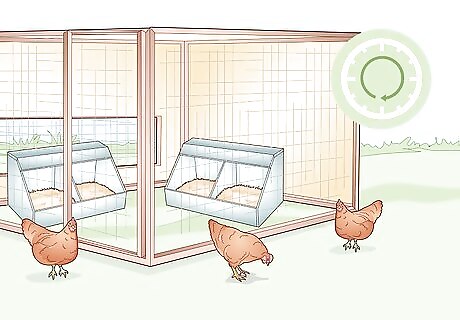
Keep the coop closed for a day. This won't be practical for a larger flock, but with a coop of three or four hens it can help prevent your hen from becoming broody. Close the entrance or block it off. Alternatively, if you get the chance, you can block it off for just the chicken.
Cooling Your Chicken

Check the weather outdoors. Wait until a warm and sunny day (or time of day) until you cool your chicken. If the weather is cold, don't attempt this method, or bring your hen indoors.
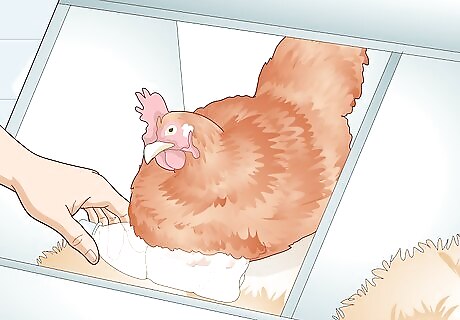
Stick a frozen water bottle underneath your hen. While she is in her nest, slide the frozen water bottle straight underneath her stomach. This should bring her out of her broody nature, as the frozen bottle discomforts her from sitting on the eggs.

Prepare a tub of cold/freezing water. Fill a small tub or container with a shallow part of cold or freezing water and grab a towel. Ensure the weather is warm.
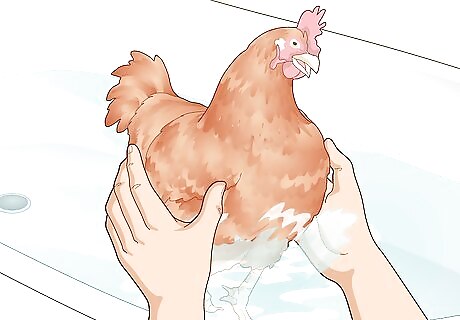
Grab your broody hen. Hold your hands firmly over both of her wings and dunk her feet-first partially into the water. Only allow her stomach to sit in the water for a few seconds, and repeat.

Dry your hen. Using your towel, gently dry her under-belly. Don't cause friction as it will damage her feathers. Place her back into the coop after she is dry. If she is wet she will get cold and messy. Repeat if the broodiness persists.
Altering the Nest
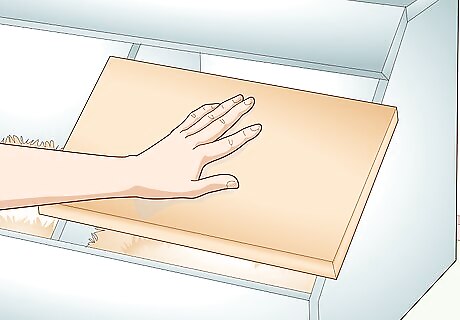
Block off the nesting area. Start with removing the hen from the nest and blocking off that one specific nest. Chickens tend to have favorites when it comes to nests, so she may not choose another nesting box available. If she persists to any nest box, block them all off temporarily. Block the nest boxes for an hour, and if that doesn't work block them off for a day.
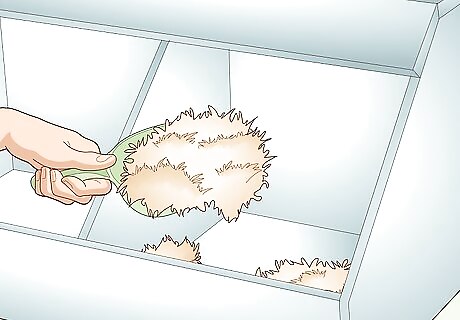
Remove the nesting material. Depriving your chicken from the option of building a suitable nest to raise her chicks may deprive her broodiness all-together. This may be impractical for a larger, established flock, but for only a small coop of hens it can work.
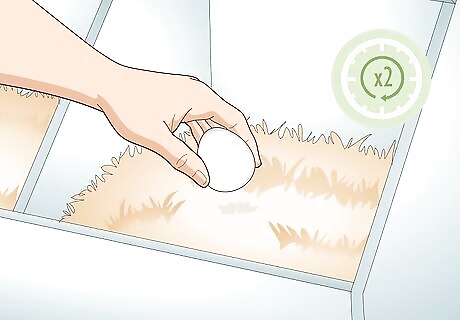
Collect eggs twice a day. If your broody hen doesn't have any eggs to sit on she might abandon the whole idea of raising chicks, however, this is quite rare. Collect the eggs more frequently as she will steal other chickens eggs from their nesting box. Remove any decoy eggs too.
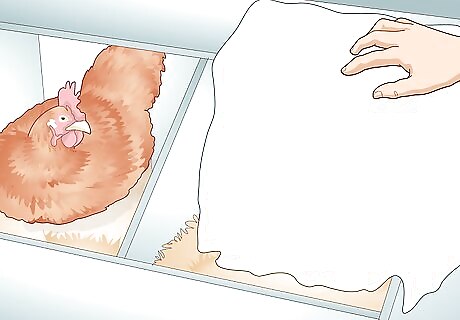
Hide the eggs. If your chickens tend to lay during a time you cannot collect them, or during the middle of the day, a good attempt would be to hide them. Broody hens will steal eggs from other nesting boxes. Attach or drape over a curtain/towel over each nest box to hide the vision of eggs to your broody hen.
Using a Smaller Cage

Purchase a smaller cage. A small crate is efficient in breaking a hen out of her broody nature. Of course, these are too small to actually house a hen, but instead they act as a jailing method to stop the hen wanting to brood.

Elevate the cage off the ground. Place a few bricks underneath to lift the cage. The idea is to make the bottom of the cage drafty to the chicken so that she no longer wants to brood.

Add food and water. Your chicken still requires access to both food and water. Place a small water bowl and pellet dish inside, but nothing else. The idea is to isolate her and not make her feel at home.
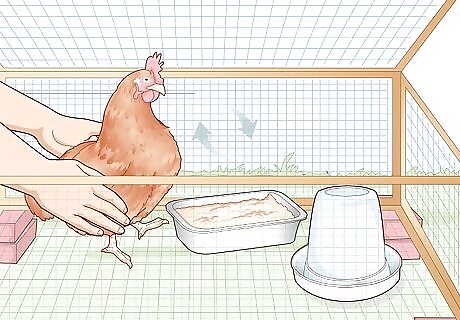
Remove and add your hen to the crate. After a good while of keeping your hen inside the crate, place her back with the flock. If she persists to show symptoms of broodiness take her back to the crate until she stops. You may have to do this a couple of times before she actually eliminates her broody nature.
Letting Her Brood

Consider allowing your chicken to hatch eggs. As a last resort, allow your broody hen to raise her own chicks. You can later sell these chicks or keep them and establish a larger flock. However, you'll need fertile eggs, and unless you have a fertile rooster around you won't get them as easy.
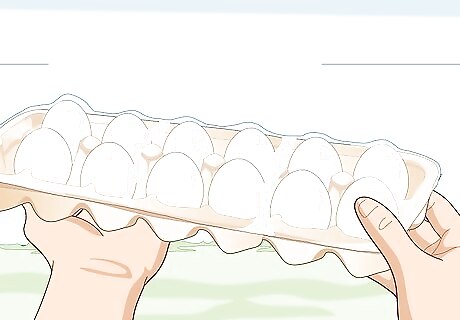
Order a dozen fertile eggs. Without a rooster you will need to buy your own fertile eggs. You can buy them online or locally, with the choice of breed, unless you'd like a mixture of eggs.
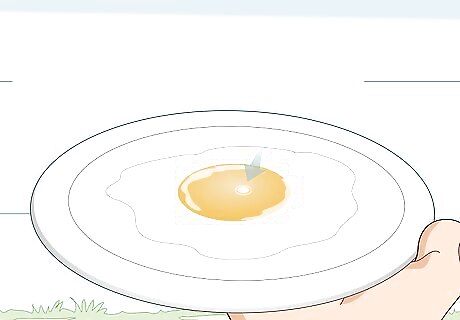
Check the eggs for fertility. If you have your own rooster, check the eggs before giving them to your hen to sit on. Cracking one out of a batch will give you a good estimate. If the egg has a white circle with a ring around inside, it is fertile.
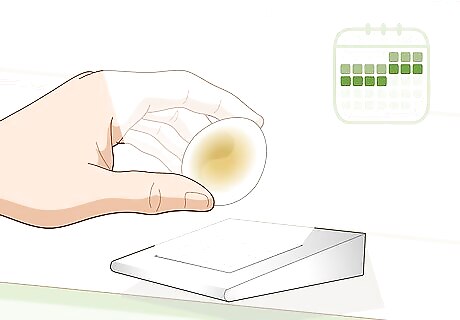
Candle the eggs after 1-2 weeks. Candling will ensure the eggs are fertile and growing. You can candle your own eggs by placing them directly above an exposed, bright lamp and looking for a fetus. Discard eggs that show no signs of fertility or growth. These will rot and contaminate the rest.
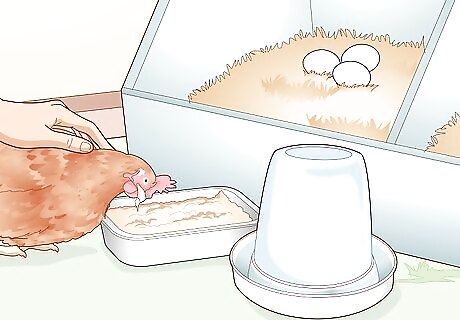
Check and examine the hen frequently. Ensure she is staying healthy by eating and drinking, but also that she is taking care of the eggs and not discarding them. She should come out every morning to eat, drink and stretch her wings, and then go back to her eggs after a good while.


















Comments
0 comment